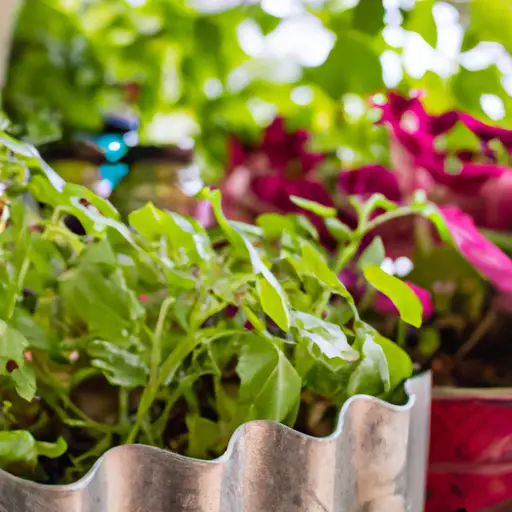Container gardening is a popular choice for individuals who want to enjoy the beauty and benefits of gardening, but lack the space for a traditional garden. Whether you live in an apartment with limited outdoor space or have a small backyard, container gardening offers a practical solution. However, like any form of gardening, it comes with its own set of challenges. In this article, we will explore some common challenges in container gardening and provide helpful tips to overcome them.
1. Limited Space:
One of the primary reasons why people turn to container gardening is because they lack space for a traditional garden. However, even containers can be limited in size, which restricts the type and number of plants you can grow. To tackle this challenge, consider vertical gardening techniques such as wall-mounted planters or tiered shelving units. These options allow you to maximize vertical space and grow more plants in limited areas.
2. Watering and Drainage:
Containers have limited soil volume compared to garden beds, which means they dry out faster and often require more frequent watering. Adequate drainage is essential to prevent waterlogged roots that can lead to root rot and other issues. Ensure your containers have drainage holes at the bottom and use well-draining potting mix specifically designed for container gardening. Mulching the soil surface with materials like wood chips or straw helps retain moisture and reduce evaporation.
3. Nutrient Availability:
Container plants rely solely on the nutrients present in their potting mix since they cannot access additional nutrients from surrounding soil like their counterparts in traditional gardens. Regularly fertilizing your container plants with balanced organic fertilizers or slow-release granules will help ensure they receive essential nutrients throughout the growing season.
4. Pest Control:
Pests can pose a significant challenge in container gardening, especially if you are growing edible crops or ornamental plants susceptible to common pests like aphids, slugs, or spider mites. Regularly inspect your plants for any signs of pest infestations and take prompt action to address the issue. Natural remedies such as neem oil or insecticidal soaps can help control pests without harming your plants or the environment.
5. Temperature Regulation:
Containers are more prone to temperature fluctuations than garden beds, as they have less soil mass to retain heat or coolness. This can be challenging for the plants, especially during extreme weather conditions. Consider using larger containers with thicker walls that offer better insulation. You can also move your containers to more sheltered areas or provide shade during hot summer days to protect them from excessive heat.
6. Plant Selection:
Choosing the right plants for container gardening is crucial. Some plants, such as certain vegetables or dwarf varieties, are well-suited for container cultivation, while others may struggle due to limited space or restricted root growth. Research which plants thrive in containers and select varieties that are suitable for your specific growing conditions and available space.
In conclusion, container gardening comes with its own set of challenges, but with proper planning and techniques, these challenges can be overcome. By addressing issues such as limited space, watering and drainage concerns, nutrient availability, pest control, temperature regulation, and selecting appropriate plants, you can create a successful container garden that brings joy and beauty to your surroundings. Happy gardening!














